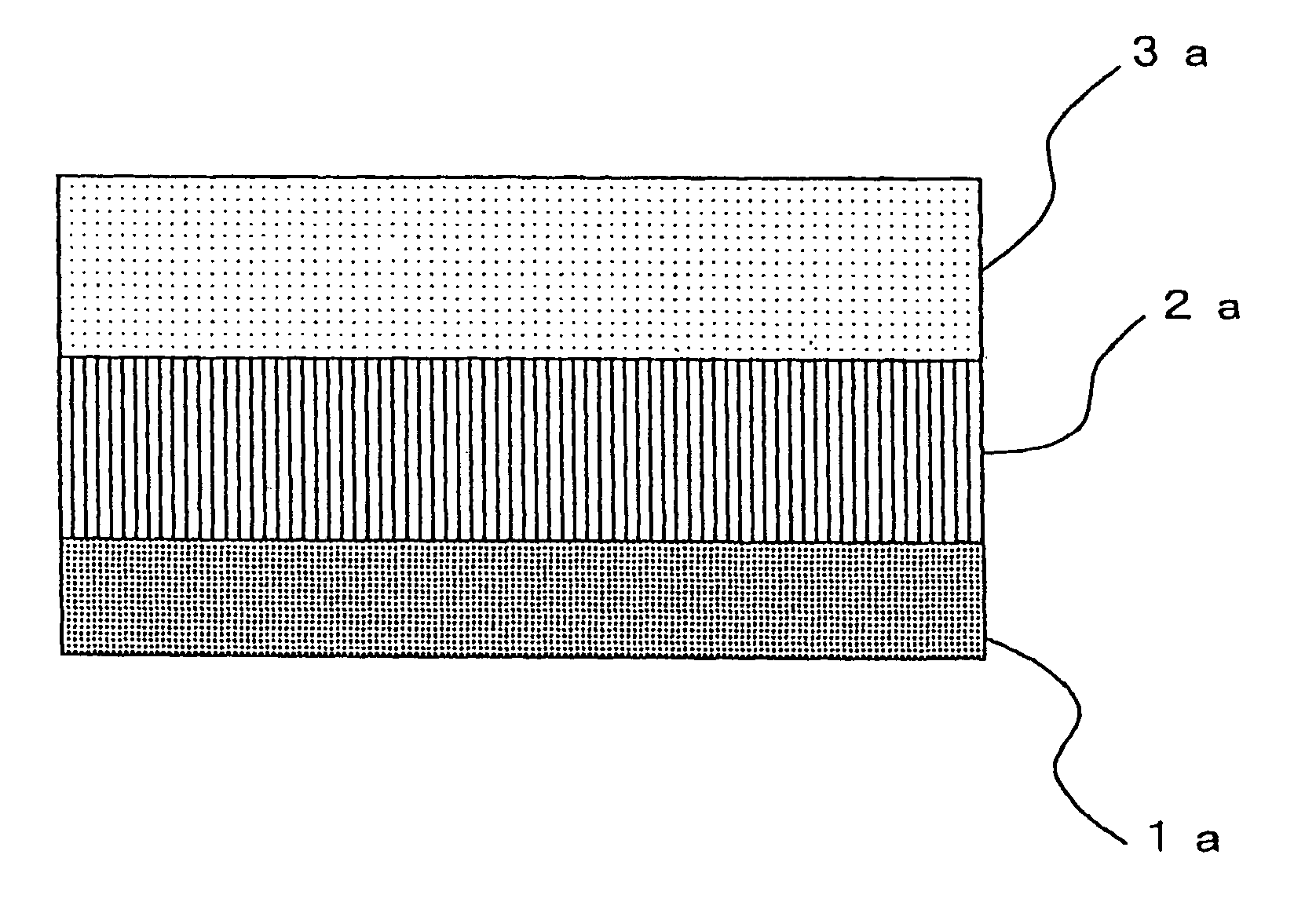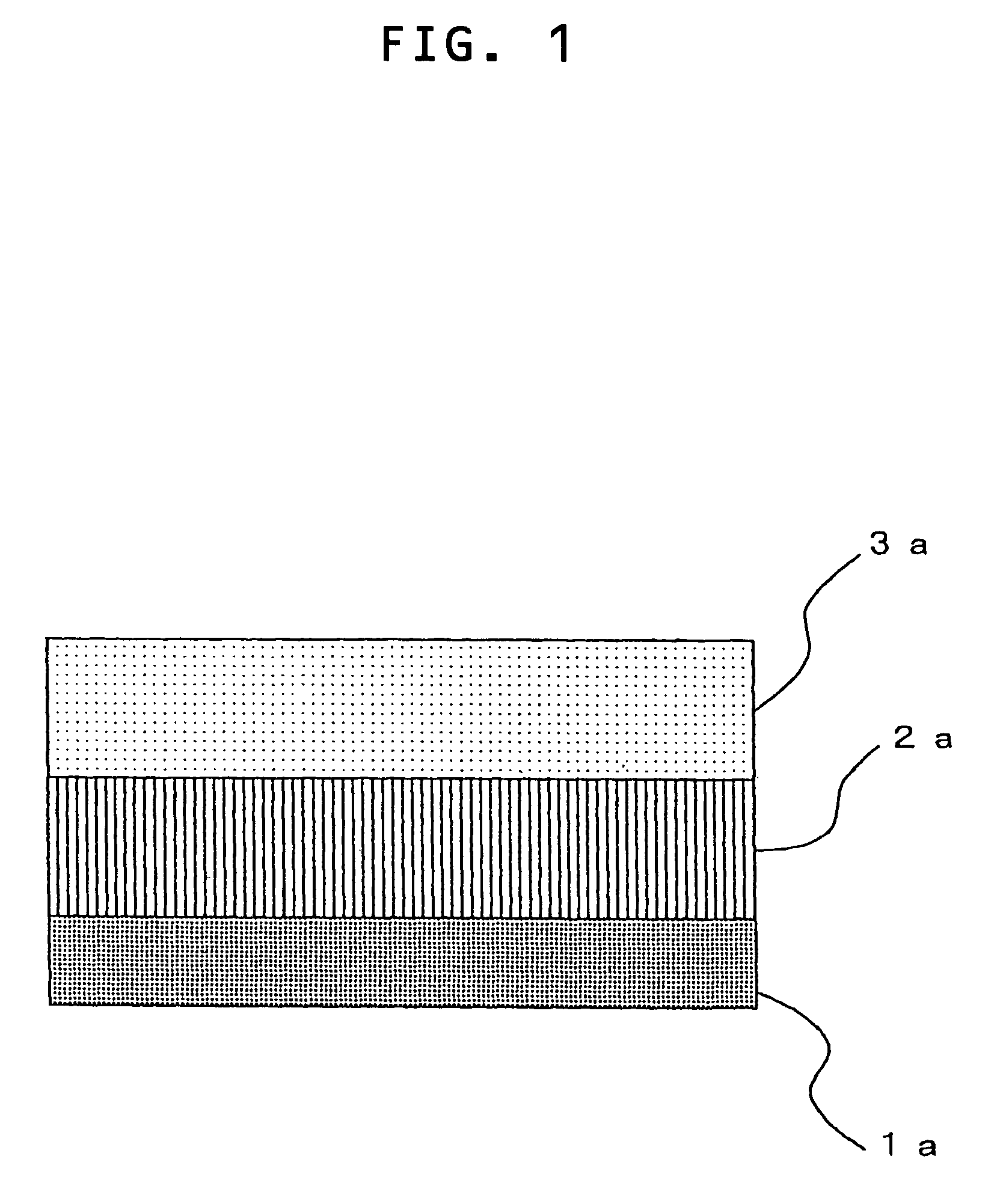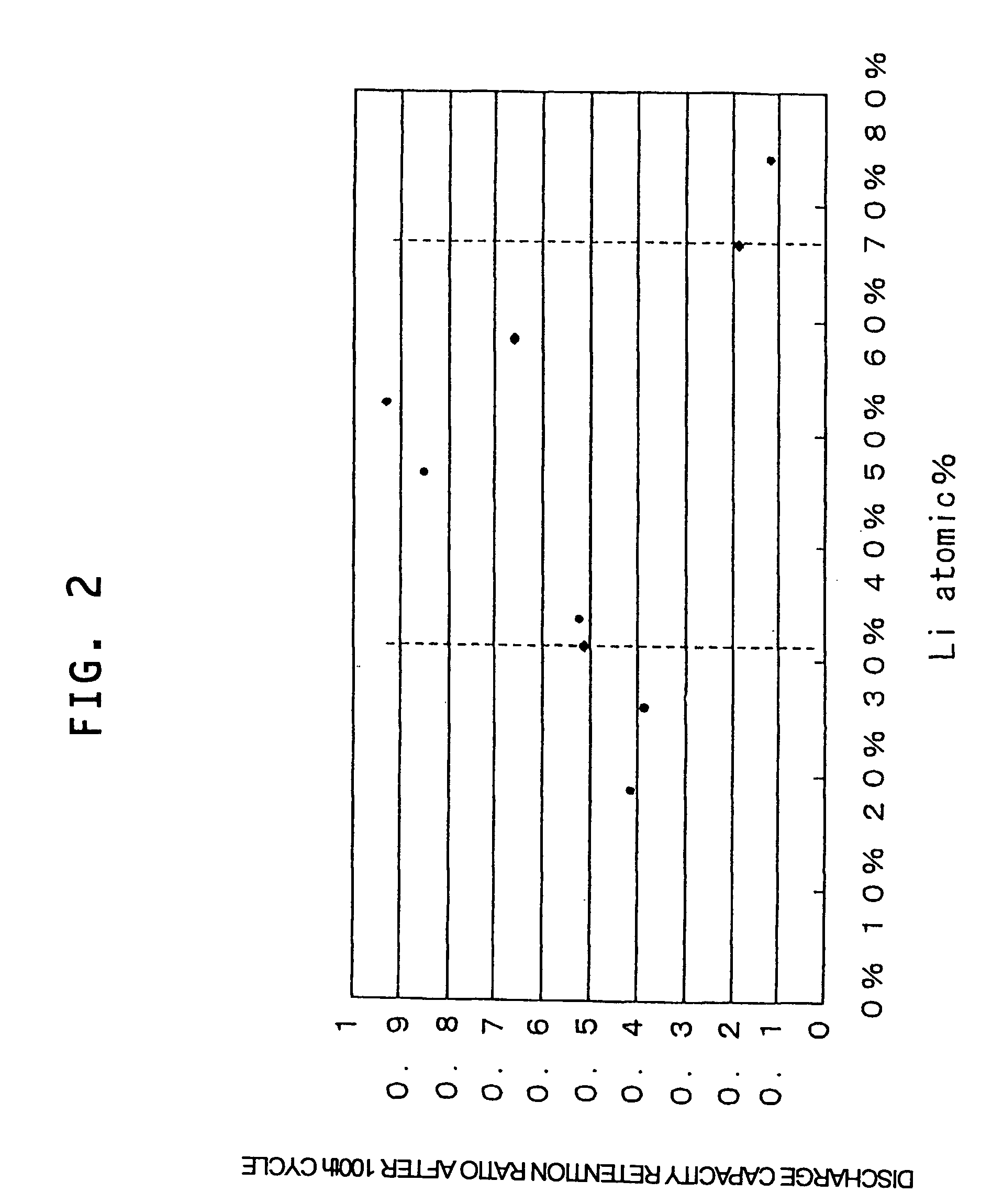Lithium-ion secondary battery
- Summary
- Abstract
- Description
- Claims
- Application Information
AI Technical Summary
Benefits of technology
Problems solved by technology
Method used
Image
Examples
first embodiment
[First Embodiment]
[0043] In the following, the first embodiment of the present invention will be described in detail with reference to the drawings. FIG. 1 is a cross-sectional view showing a negative electrode of a nonaqueous electrolyte secondary battery according to the first embodiment of the present invention.
[0044] The collector 1a is an electrode for letting electric current out of the battery and drawing current into the battery from the outside on the occasion of charging and discharging. The collector 1a is only required to be (conductive) metal (foil), and metallic foil. made of, for example, aluminum, copper, stainless steel, gold, tungsten, and molybdenum may be employed. The collector 1a is 5 to 25 μm in thickness.
[0045] The carbon layer 2a is a negative electrode member that absorbs or desorbs Li on the occasion of charging and discharging. The carbon layer 2a. is made of carbon capable of absorbing Li. For example, graphite, fullerene, carbon nanotube, DLC (Diamond...
example 1
[0054] In the following, the present invention will be more fully described by Example 1 according to the first embodiment of the present invention.
[0055] Copper foil, graphite having a thickness of 100 μm after compression and Si were used for the collector 1a, carbon layer 2a and lithium absorbing material layer 3a of the negative electrode shown in FIG. 1. respectively. A lithium cobaltate mixture was employed for a positive electrode or cathode active material, and aluminum foil was employed for a cathode collector. A mixed solvent of ethylenecarbonate (EC) and diethylcarbonate (DEC) (EC / DEC mixture ratio: 30 to 70 by volume), in which 1 mol / l (1M) of LiPF6 was dissolved, was employed for an electrolyte solution. With the aforementioned negative electrode, positive electrode, electrolyte solution and a separator, a cylindrical secondary battery was formed. The electrodes were wound in a spiral.
[0056] The electric properties of the cylindrical secondary battery were examined by...
example 2
[0063] In the following, the present invention will be more fully described by Example 2 according to the first embodiment of the present invention.
[0064] Copper foil, graphite having a thickness of 100 μm after compression and Si were employed for the collector 1a, carbon layer 2a and lithium absorbing material layer 3a of the negative electrode shown in FIG. 1, respectively. A lithium cobaltate mixture was employed for a positive electrode or cathode active material, and aluminum foil was employed for a cathode collector. A mixed solvent of ethylenecarbonate (EC) and diethylcarbonate (DEC) (EC / DEC mixture ratio: 30 to 70 by volume), in which 1 mol / l (1M) of LiPF6 was dissolved, was employed for an electrolyte solution.
[0065] With the aforementioned negative electrode, positive electrode, electrolyte solution and a separator, a cylindrical secondary battery was produced. The electrodes were wound in a spiral.
[0066] The electric properties of the cylindrical secondary battery wer...
PUM
| Property | Measurement | Unit |
|---|---|---|
| Fraction | aaaaa | aaaaa |
| Fraction | aaaaa | aaaaa |
| Fraction | aaaaa | aaaaa |
Abstract
Description
Claims
Application Information
 Login to View More
Login to View More - Generate Ideas
- Intellectual Property
- Life Sciences
- Materials
- Tech Scout
- Unparalleled Data Quality
- Higher Quality Content
- 60% Fewer Hallucinations
Browse by: Latest US Patents, China's latest patents, Technical Efficacy Thesaurus, Application Domain, Technology Topic, Popular Technical Reports.
© 2025 PatSnap. All rights reserved.Legal|Privacy policy|Modern Slavery Act Transparency Statement|Sitemap|About US| Contact US: help@patsnap.com



